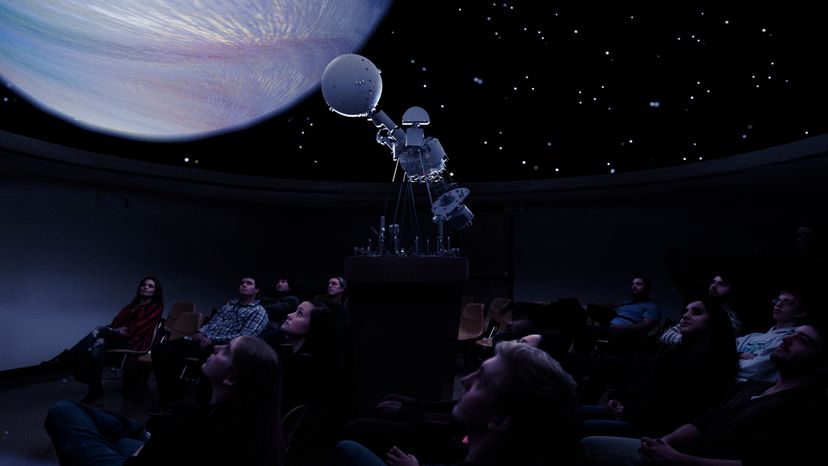
Planetarium, is an educational device for showing the locations and movements of the planets and other objects in the universe. A modern planetarium is a complex optical instrument. It projects images of the planets, moon, and stars onto a domed ceiling, creating an accurate representation of the nighttime sky. The room or building in which such an instrument is housed is also called a planetarium.
A typical planetarium forms images of the stars by focusing light from one or more bright lamps through thousands of tiny holes drilled through metal plates. The plates are positioned around two spherical structures, one for Northern Hemisphere stars and the other for Southern Hemisphere stars. The images of the moon and planets are produced by separate projection devices mounted on a frame between the two star spheres. By means of various sets of gears and electric motors, the planetarium can show the rising and setting of the stars and the motion of the moon and planets along the ecliptic. The planetarium can also show the appearance of the heavens from any given place on Earth at any given time far into the past or future. Additional projection devices are used for depicting such phenomena as eclipses, auroras, or meteors, and for showing such aids to instruction as the system of celestial coordinates or outlines of the constellations.
Advertisement
Another type of planetarium uses a computer-controlled cathode-ray tube similar to the picture tube of a television set. The images of the stars and planets are formed on the screen of the tube and projected by a fish-eye lens onto a domed ceiling.